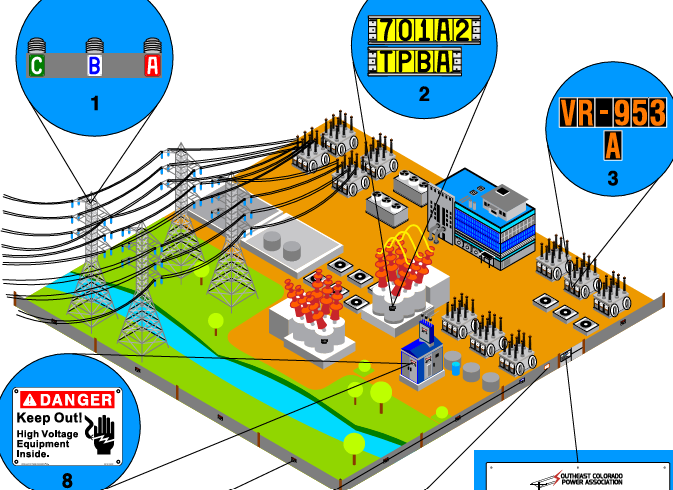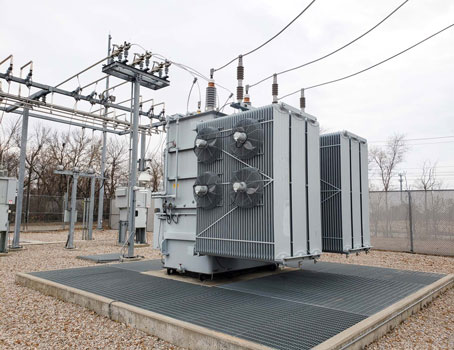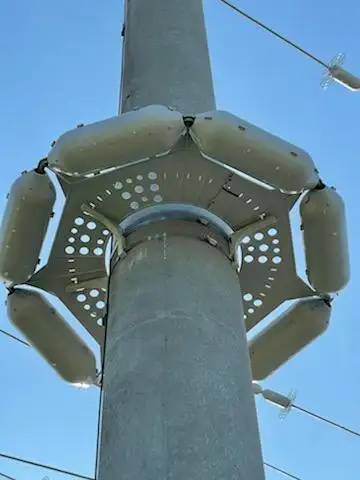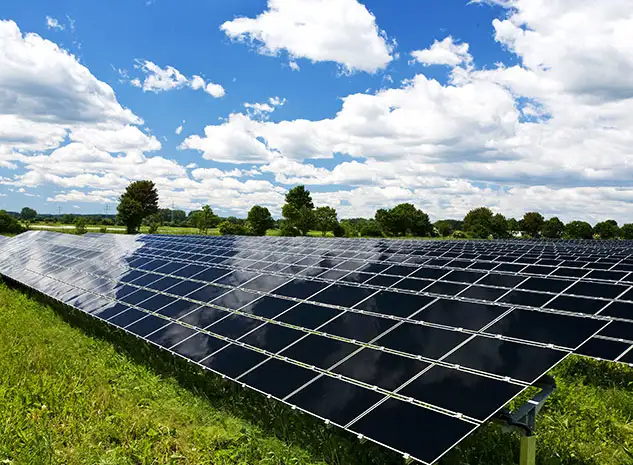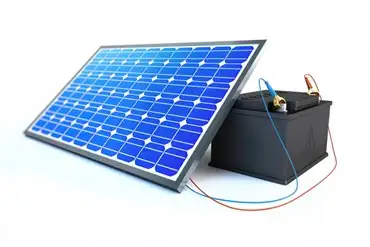Solar PV System - Components, Cost, and Maintenance
By R.W. Hurst, Editor
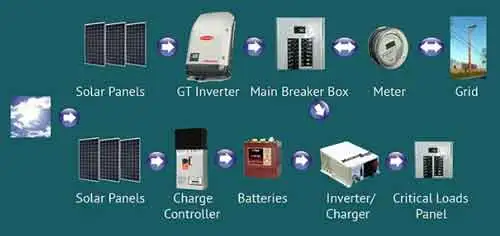
Solar PV system converts sunlight into electricity using photovoltaic panels, inverters, and batteries; supports grid-tied and off-grid setups, net metering, MPPT controllers, monitoring, and energy storage for efficient rooftop installation and reliable renewable power.
What Is a Solar PV System?
A Solar PV system converts sunlight to electricity using PV modules and inverters, with optional batteries for storage.
✅ Grid-tied, off-grid, and hybrid designs for varied applications.
✅ Includes panels, inverters, racking, MPPT, and monitoring.
✅ Improves energy efficiency, lowers bills, and enables net metering.
A Solar PV system offers a clean and renewable source of energy that can help reduce dependence on fossil fuels and lower electricity bills. Understanding the components and how it integrates with electrical systems can help individuals and businesses make informed decisions about using solar energy. With continued advancements in solar photovoltaic technology, the future of solar energy looks bright, and the potential to harness the power of the sun to generate electricity is limitless. By investing in solar and making use of this abundant and renewable energy source, we can work towards a cleaner and more sustainable future. For a concise overview of key advantages, consult this guide to the advantages of solar power to frame expectations and planning.
What is a Solar PV System?
It is a type of renewable energy system that uses photovoltaic (PV) cells to convert sunlight into electrical energy. The PV cells are made of semiconductor materials, such as silicon, that generate a flow of electrical current when exposed to sunlight. PV cells are grouped together to form PV panels, which are the primary components of a system. If you are new to the science behind PV technology, this introduction to photovoltaic cells clarifies how light becomes electricity in practical systems.
Components of a Solar PV System
In addition to PV panels, a solar system includes several other components. These include a charge controller, battery bank, and inverter.
A charge controller regulates the flow of electricity from the PV panels to the battery bank. It ensures that the battery bank is not overcharged, which can damage the batteries, or undercharged, which can reduce the lifespan of the batteries.
A battery bank stores the generated electricity for later use. It is important to select the appropriate battery type and size to ensure that the system can meet the energy demands of the home or business.
An inverter is a device that converts DC electricity generated by the PV panels into AC electricity that can be used to power homes and businesses. It is essential for any grid-tied system that is connected to the electrical grid. For selection and sizing, a primer on solar power inverters explains efficiency ratings, waveform quality, and integration steps.
Integration with Electrical Systems
Integration with electrical systems can be done in several ways. The most common method is a grid-tied system. In a grid-tied network, the system is connected to the electrical grid, and any excess electricity generated by the system is sent back to the grid. This excess electricity can be used by others on the grid, and the system owner may receive credits on their electricity bill.
Off-grid systems are not connected to the electrical grid, and the generated electricity is stored in batteries for later use. These systems are typically used in remote locations where access to the electrical grid is not available. For design examples and best practices, see these resources on off-grid solar power systems to plan storage and load management effectively.
AC and DC Electricity
Electrical energy can be produced as either AC (alternating current) or DC (direct current) electricity. PV cells generate DC electricity, which is then sent to a charge controller that regulates the flow of electricity to the battery bank. The battery bank stores the DC electricity, which can be used when needed, and an inverter converts the DC electricity into AC electricity that can be used to power homes and businesses.
Types of PV Panels
There are several types of PV panels available, including monocrystalline, polycrystalline, and thin-film. Monocrystalline panels are made from a single silicon crystal and are the most efficient type of PV panel. Polycrystalline panels are made from multiple silicon crystals and are less expensive than monocrystalline panels. Thin-film panels are the least efficient but are more flexible and can be used in a wider range of applications. Panel choice should align with the broader architecture of renewable energy systems so mounting, storage, and controls work together efficiently.
What are the benefits of using solar pv technology?
Using a system provides a number of benefits. First and foremost, systems generate clean and renewable energy. Unlike fossil fuels, solar energy does not produce harmful emissions that contribute to climate change. By using solar energy, we can help to reduce our carbon footprint and combat the effects of climate change. Balanced decisions also consider limitations, and an objective look at solar power pros and cons can help set realistic performance and maintenance expectations.
Systems can also provide significant cost savings. While the initial cost of installing a system may be high, the long-term savings on electricity bills can be significant. In addition, many governments and organizations offer incentives and tax credits for the installation of solar energy systems.
Another benefit of using systems is the increased independence from the electrical grid. Grid-tied solar cells allow excess electricity to be sent back to the grid, providing credits towards electricity bills. Off-grid pv arrays, on the other hand, provide complete independence from the grid, which can be especially useful in remote locations where access to the grid is limited.
What types are there?
There are two main types: grid-tied and off-grid. Grid-tied systems are connected to the electrical grid, and any excess electricity generated by the system is sent back to the grid. Off-grid systems, on the other hand, are not connected to the electrical grid, and the generated electricity is stored in batteries for later use.
Grid-tied systems are the most common type of system and are typically used in homes and businesses. They allow excess electricity to be sent back to the grid, providing credits towards electricity bills. Off-grid systems, on the other hand, are used in remote locations where access to the electrical grid is limited or nonexistent.
How do I know if my business is suitable?
Determining if your home is suitable for a system involves several factors. First, it is important to consider the location of your home. The ideal location for a system is an area that receives a high amount of sunlight year-round, typically in the southern hemisphere. However, even homes in less sunny areas can still benefit from a system.
The size and orientation of your roof are also important factors to consider. Ideally, a system should be installed on a south-facing roof with minimal shading. The amount of available roof space and the amount of electricity needed to power your home are also important considerations when determining the suitability of a system.
How much does it cost?
The cost of a system varies depending on the size, the location, and the components used. While the initial cost of a photovoltaic system may be high, it is important to consider the long-term savings on electricity bills and the potential return on investment. In addition, many governments and organizations offer incentives and tax credits for the installation of solar energy systems. For budgeting and payback modeling, this overview of solar power economics outlines levelized costs, incentives, and financing options.
Typically, the cost is measured in dollars per watt of installed capacity. The cost per watt can vary depending on the size of the system, with larger units typically having a lower cost per watt. The cost can also be reduced by using less expensive components or by taking advantage of government incentives and tax credits.
How can I maintain and monitor my solar PV system?
Maintaining and monitoring is important to ensure optimal performance and prolong the lifespan of the components. Regular cleaning of PV panels is necessary to remove dirt and debris that can reduce their efficiency. It is also important to monitor the battery bank and charge controller to ensure proper functioning and avoid damage. Additionally, monitoring the PV performance can help identify any issues or potential problems before they become larger and more costly to fix.
Most systems come with monitoring software that allows the owner to monitor the performance of the system in real-time. This software can provide information about the amount of electricity generated, the amount of electricity used, and any issues or errors that may occur. Some monitoring software can also provide alerts or notifications if the project experiences a problem or if maintenance is required.
Regular maintenance is also important to ensure optimal performance. In addition to cleaning the PV panels and monitoring the battery bank and charge controller, it is important to perform regular inspections of components. This can help identify any issues or potential problems before they become larger and more costly to fix.







